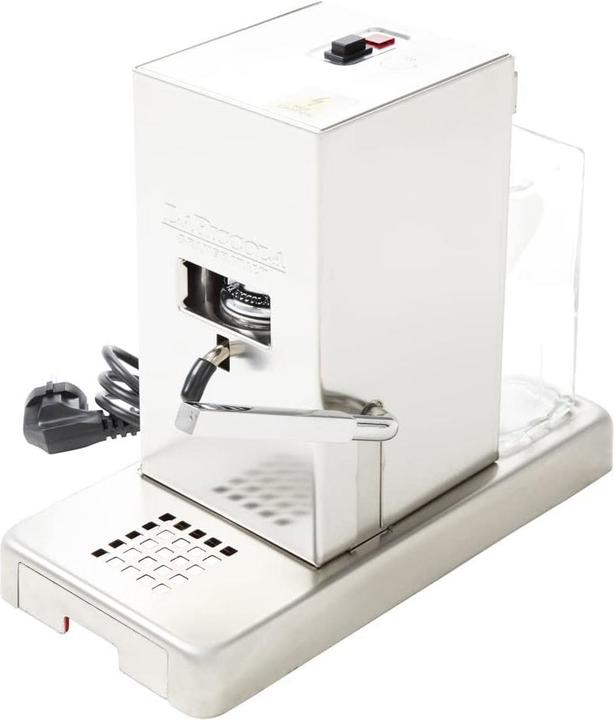
Pad coffee review: small machine, big flavour
I can now make a decent espresso without a master’s degree in coffeeology. And I’m not generating mountains of capsule waste either. I just feed pads into a small machine.
Portafilter fans, be warned. You may find parts of this review and the video above disturbing. No beans are freshly ground, and nothing is weighed to the tenth of a gramme.
If you’re still reading, you’re part of my target audience. I was looking for a compact machine that’d allow me to quickly and easily make five or six good espressos a day. I found what I was looking for in the La Piccola from the eponymous manufacturer in Italy. A manufacturer, you say? Don’t worry, we’re talking about a perfectly reasonable price range of just over 300 Swiss francs.
The fair price is because the La Piccola is reduced to the essentials: it makes espresso. That’s it. Nothing else. And it does so using ESE pads. There’s no steam wand, and you’ll have to get your own frothed milk if you want it.

Material and finish: solid and stylish
First, let’s talk about the machine. It’s just under 16 centimetres wide, 36 centimetres deep and 27 centimetres high. That means it should fit in almost any kitchen. But its compact design supposedly has different origins. The story goes that Italian fishermen used be able to use the machine to prepare their «caffè» even at sea. So, its five-kilogramme weight’s a handy feature, making it very stable. Rubber feet also stop it slipping. Not something you’d typically use in the kitchen, but maybe they’d be useful if you own a boat.
The main material’s stainless steel. It makes for an industrial chic – almost extravagant – look and ensures the machine’s solidly made. Although the panel gaps wouldn’t exactly be the envy of German car manufacturers.
The only plastic parts are the drip tray and the water tank cap. The tank itself’s made of thick-walled glass and holds one litre. The machine draws the water into the thermoblock via a plastic hose.
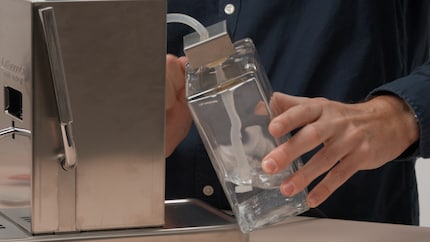
All you have to do is undo a few screws to open the machine. A YouTuber from the Netherlands has made a great video showing how easy it is. This makes it easy to do a basic clean yourself.
Rudimentary and easy to use
La Piccola makes espressos incredibly easy. Just open the capsule compartment in the brewing unit with a lever, insert a coffee pad, push the lever down, then press the button that starts the extraction. This is roughly how it’s described in the instructions, which are otherwise pretty unhelpful. The translation’s a bit sloppy, and the information on adjusting the pressure (see below) is nowhere to be found.
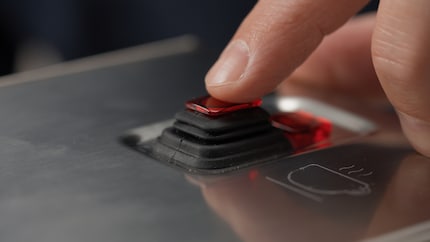
The La Piccola only has two buttons. One turns the machine on. The other starts the coffee brewing process and stops it again when I press it a second time. There’s no display, no pressure gauge, no timer. There’s just the button, which gives you a sense of control and power. Completely different to a lot of annoying touchscreens.
The downside is that you need a basic understanding of espresso. Seven grammes of coffee in the pads should brew 15 to 20 grammes of espresso into the cup. This should happen in about 25 seconds.
If that doesn’t work, you can adjust precisely one parameter. There’s a ring on the group head, which you can turn to increase or decrease the pressure with which the machine presses the pad into the portafilter. This allows more or less water to pass through the grounds. You’ll always need to experiment a bit, especially with pads from different roasters – it takes two or three espressos to find the right setting. A native Italian – who’s long sworn by ESE pads – gave me the tip that the paper tab I hold the pod by should be half wet. That’s the sweet spot.
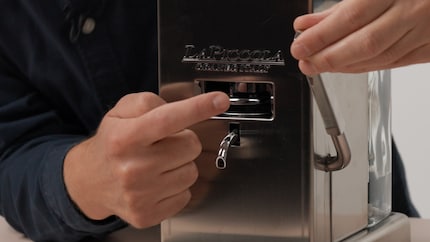
Sustainability: environmentally friendly and durable
The La Piccola has serious sustainability credentials. Because you only need seven grammes of coffee per espresso, you generate a smaller carbon footprint compared to a portafilter machine, which grinds around 20 per cent more coffee. It’s important to know that cultivation and processing are responsible for the largest share of emissions in the coffee supply chain. This doesn’t mean that being a portafilter machine enthusiast makes you an environmental disaster. Buying coffee from small, local and certified farms is just as good.
ESE pads clearly win the eco comparison to plastic or aluminium capsules. ESE pads enclose the coffee in a paper filter, and you can easily compost the pad after use. There’s no need to collect old pods and no complicated recycling process.
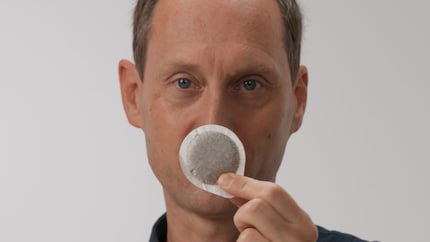
It’s also worth noting that the machine itself’s designed to last. The manufacturer offers reasonably priced spare parts and has numerous service partners who can carry out repairs if needed.
As I use the La Piccola daily, I appreciate its low power consumption. Once switched on, I can keep it ready for use throughout the morning, and it draws less than 15 watts. During brewing, the reading on my meter only briefly spikes to just over 200 watts. According to the manufacturer, the maximum power consumption is 500 watts, while fully automatic coffee machines use over 1,000 watts – some even reaching 2,000.
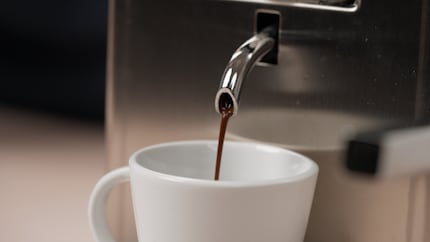
In a nutshell
ESE pads make coffee easy
Pro
- The open system ensures a huge selection of coffee
- Easy to use
- Sturdy design
- Readily available spare parts
- Low power consumption
Contra
- Instructions poorly translated and incomplete

Journalist since 1997. Stopovers in Franconia (or the Franken region), Lake Constance, Obwalden, Nidwalden and Zurich. Father since 2014. Expert in editorial organisation and motivation. Focus on sustainability, home office tools, beautiful things for the home, creative toys and sports equipment.


